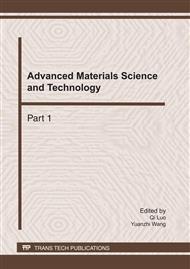p.679
p.685
p.691
p.697
p.702
p.707
p.712
p.717
p.720
Hydrothermal Treatment of TiO2 Nanotube Arrays with AgNO3 Solutions and their Photocatalytic Properties
Abstract:
In this paper, highly-ordered TiO2 nanotube arrays (TNAs) were firstly fabricated by electrochemical anodization. Secondly, the as-prepared TNAs were used as precursors for hydrothermal treatment and large percentage of nanoparticles with special shape were achieved. Their photocatalytic activity was evaluated based upon the removal of methylene blue (MB) dye in the aqueous solution. In order to enhance the photocatalytic properties, we added a certain amount of AgNO3 solution (0.1M) in the hydrothermal treatment process and the experiment demonstrated that the addition of AgNO3 solution displayed an excellent improvement for the photocatalytic activity. Under sunlight irradiation, the methylene blue pollutant of 1×10−5M was almostly completely degraded by Ag -TiO2 nanoparticles within 300 min.
Info:
Periodical:
Pages:
702-706
Citation:
Online since:
January 2011
Authors:
Price:
Сopyright:
© 2011 Trans Tech Publications Ltd. All Rights Reserved
Share:
Citation:


